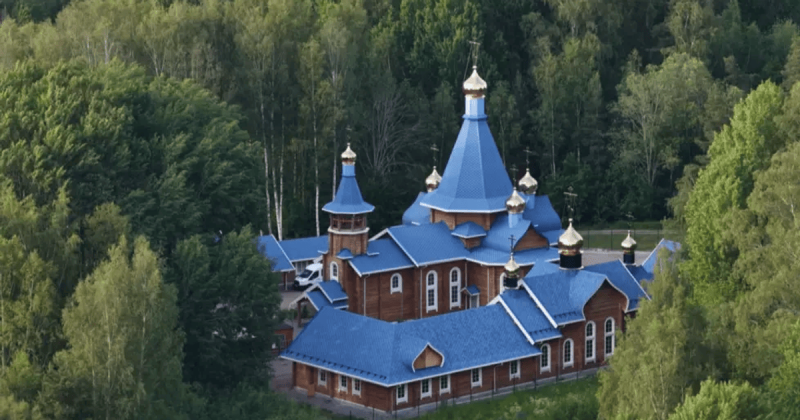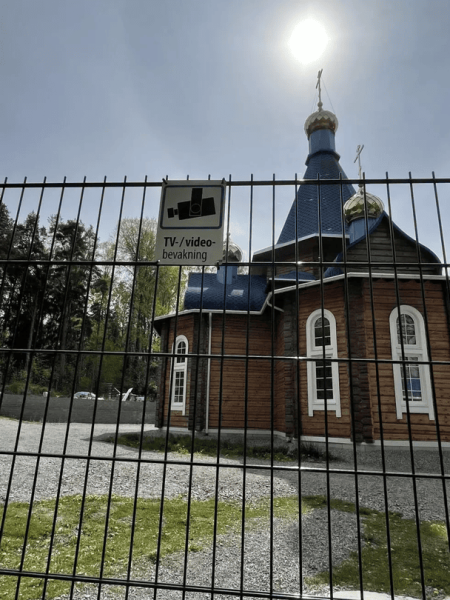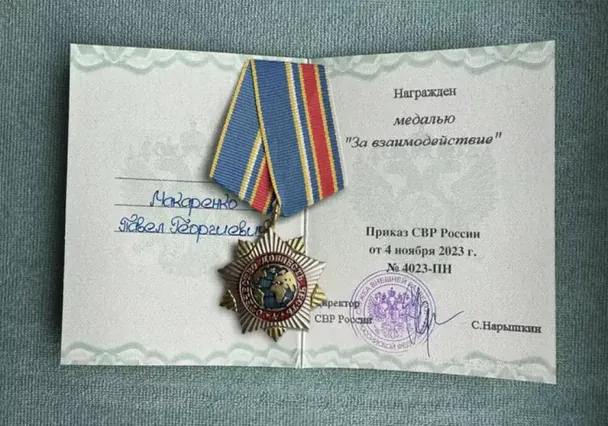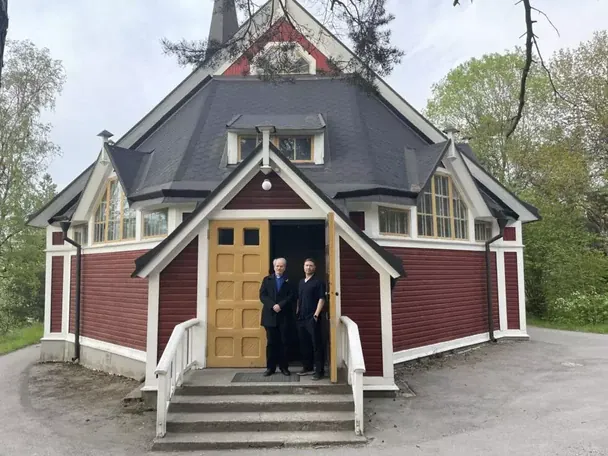The Russian Orthodox Church “accidentally” built a church 300 meters from a NATO airfield in Sweden – the Swedes are sounding the alarm over Russian spies in cassocks.

The Russian Orthodox Church has even reached Westeros. True, we are not talking about the continent in the universe of George Martin's “Game of Thrones”, but about a very real town in Sweden. And in all likelihood, the Russian Federation sent “agents in cassocks” there, because the church is located near an important Swedish airfield.
More details about this can be found in the France 24 article.
“Almost everything about the onion-domed Russian Orthodox church near the modest Swedish city of Västerås seems odd: its proximity to the airport, its taller-than-planned spire and its elusive priest, allegedly approved by the Kremlin's intelligence service,” it says.
According to the publication, Swedish intelligence services believe that Moscow is likely using the church as a platform for espionage and other hostile hybrid activities that potentially threaten Sweden's national security.
There are almost no people on the territory, and religious services are not frequent.
Journalists who have visited the Russian Church of Our Lady of Kazan admit that there is something unpleasant about the place. The church compound is protected by a high steel fence, and several surveillance cameras peer out from under the church's blue roof. A “No Trespassing!” sign warns the curious to stay away.

There is no bell on the gate, and the phone number attached to the locked gate remains unanswered.
A local resident who was walking her dog said she thought the church was beautiful, but she rarely saw anyone there and that there didn't seem to be much church activity going on there other than the two weekly services.
“The last time I came here, I saw a man walking around [the fenced area] with a guard dog. You would think the church would be open to everyone, but there is a fence around it.
Russian church built 'accidentally' near strategic site
The publication notes that Stockholm-Västerås Airport (VST) is not just a simple airport.
It is home to Sweden's third-largest airstrip and was a Swedish Air Force base until it was decommissioned in 1983. When Sweden abandoned nearly 200 years of neutrality to join NATO in 2024, VST once again became a site of strategic military importance.

NATO exercises are now held here regularly as the allies hone their collective readiness to defend not only Sweden but the entire Nordic-Baltic region from the greatest threat since World War II and the Cold War: Russia.
In addition to the proximity to the airport, experts are also concerned about the church's location.
Sweden's key east-west highway, the E18, runs through the city. The highway connects Stockholm with Norway and passes through a number of important installations, including the Swedish Army's Command and Control Regiment in Enköping, which is a crucial military communications hub.
The Russian Orthodox Church has been interested in this territory for a long time
The Swedish branch of the Moscow Patriarchate began showing interest in the territory in 2012.
The Russian community of Västeras at that time numbered only about 100 members. Its leader, the priest of the Russian Orthodox Church Pavel Makarenko, promised a luxurious church built in true Russian traditions.
Considering that Västerås had a small Russian diaspora, the journalists decided to conduct their own investigation. As it turned out, SÄPO (Swedish intelligence) tried to stop the construction of the Russian church due to security risks at the very beginning.
However, due to a series of mistakes by one municipal official and “poor communication” at the local level, the warnings were ignored and the church was built. Moreover, the construction of a 22-meter church spire was approved, although the local zoning plan clearly stated that it could not exceed 10 meters due to its proximity to sensitive infrastructure – the airport.
In late 2023, the Swedish security police SAPO issued a sensational statement: Russia, it warned, was using the Moscow Patriarchate in Sweden “as a platform for intelligence gathering and other activities that threaten national security.”
It was also noted that representatives of the Swedish branch of the Russian Orthodox Church had contacts with Russian intelligence services, encouraged support for Russia's invasion of Ukraine, and that their parish “had received significant funding from the Russian state on several occasions.”
Priest – convicted of fraud and awarded a medal by the Russian Foreign Intelligence Service
As it turns out, the rector of the Russian Orthodox Church, Pavel Makarenko, is not only a priest. He is the CEO of the Russian import-export company NC Nordic Control AB. In 2021, the Stockholm District Court found Makarenko guilty of aggravated accounting fraud. It involved issuing false invoices for companies in Russia and Belarus.
The “Holy Father” received a suspended sentence of six months, 160 hours of community service and a three-year ban on business activity from the Swedish court.
Journalists found out that Makarenko was awarded a medal for good service by the Russian Foreign Intelligence Service.

When FRANCE 24 journalists attended a Sunday service in Västerås to speak to the priest, the team was asked to leave because members of the parish had discovered a hidden camera. “Stop filming! Delete everything!” the man shouted. For several days, the journalists tried to contact the priest – in person and by phone – but to no avail.
The Russian Orthodox Church wanted to seize another building in a strategic area of Stockholm
Journalists also spoke with a Protestant pastor from one of the Stockholm communities, who complained that his church was almost forcibly seized by the Russians.
However, when the lease expired, the Russians refused to leave the premises. In the best traditions of the Moscow Patriarchate, they changed the locks and stopped letting the rightful owner into the church.
“They stole this church. They forgot the seventh commandment: 'You shall not steal.' I couldn't even get into my church. I couldn't get to the vestments that were hanging here because they had changed the locks,” says Kåre Strindberg, who has been the church's pastor since the mid-1990s.
At some point, Strindberg's son, Johann, found a CCTV camera in the back room of the church, and as soon as he had dismantled it, a man in military uniform approached him.
“He spoke Russian and came out of nowhere. It was surreal,” he recalls.
Four years later, the Swedish congregation finally got the church back, but only after those responsible were brought to trial.
Both Kare and Johan Strindberg believe their “family church” was targeted because of its location.

Like the church in Västerås, St. Siegfried's Church is strategically located, and its spire offers a fascinating view of Stockholm in its entirety. Some say you can even see the Russian embassy from there.
But perhaps even more importantly, the temple is located a stone's throw from a large bridge that connects Essingelden, Stockholm's main thoroughfare and one of the country's most important transport corridors. Around 150,000 cars, trucks and buses pass through here every day. The largest reservoir in the Swedish capital is also nearby.
The Russian Orthodox Church is a structure that only looks like a church
“Many countries in Europe underestimate the threat from the Russian Orthodox Church. It is the only [Russian] structure that is not subject to sanctions, and we tend to make the mistake of looking at it as a church – because it looks like a church – when in fact it is something else,” says security expert Patrik Oksanen.
Let us recall that President Zelensky deprived the head of the UOC (MP) Metropolitan Onufriy of Ukrainian citizenship.

